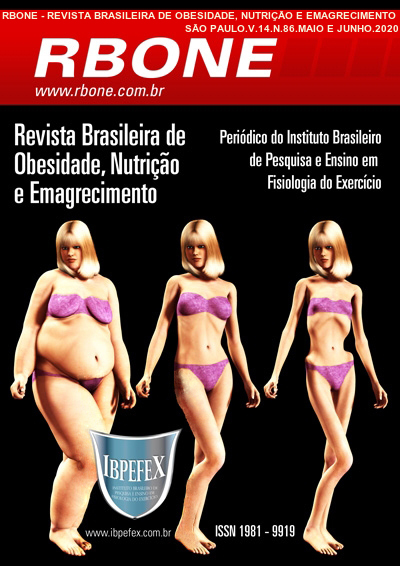Comparison of fat percentage, fat mass and slim mass between veteran practicants and krav-maga beginners during 16 week training
Abstract
Aim: The aim was to compare the percentage of fat, fat mass and lean mass between veteran and novice Krav-Maga practitioners during 16-week Krav-Maga training. Materials and Methods: Thirty Krav-Maga practitioners participated voluntarily, being: veterans (n = 15), who practiced Krav-maga for at least 3 years and beginners (n = 15) who are starting this Krav-Maga practice. The physical training program was developed in 16 weeks of training, with Krav-Maga specific joint mobility, stretching, strengthening and coaching exercises, with frequency of three weekly sessions and duration of 60 to 90 minutes with intensities ranging from low, moderate to high, established by the heart rate obtained at the aerobic threshold (AT) and respiratory compensation point, obtained by the Yo Yo VO2 max test and through the evaluations and protocols applied before and during the follow-up. Fat percentage was estimated using the proposed Jackson and Pollock method for men with seven skinfolds (subscapular, triceps, pectoral, middle axillary, supra iliac, abdominal and middle femural) with a Sanny scientific plicometer, accurate to 1 mm. Descriptive statistics. Results and Discussion: Both groups had an increase in lean mass and a decrease in fat mass, as well as a decrease in fat percentage. Conclusion: We conclude that 16 weeks of Krav-maga training is able to reduce aspects of veteran and beginner body composition.
References
-Instituto Brasileiro de Geografia e Estatística. Instituto Brasileiro de Geografia e Estatística-IBGE. PNAD 2017.
-Jackson, A.S.; Pollock, M.L.; Ward, A. Generalized equations for predicting body density of men. Br J Nutr. Vol. 40. p.497-504.1978.
-Lichtenstein, K. Krav Maga: a filosofia da defesa israelense. 2ª edição. Imago. Rio de Janeiro. 2016.
-Rossi, L.; Tirapegui, J. Avaliação antropométrica de atletas de Karatê. Revista Brasileira de Ciências e Movimento. Vol. 15. Núm. 3. p. 39-46. 2007.
Copyright (c) 2020 João Batista de Andrade Neto, Antonio Coppi Navarro, Gabriel Moreira Pereira, Rayssa Marques Ferreira, Francisco Navarro, Natalino Salgado Filho

This work is licensed under a Creative Commons Attribution-NonCommercial 4.0 International License.
Authors who publish in this journal agree to the following terms:
- Authors retain the copyright and grant the journal the right of first publication, with work simultaneously licensed under the Creative Commons Attribution License BY-NC which allows the sharing of the work with acknowledgment of the authorship of the work and initial publication in this journal.
- Authors are authorized to enter into additional contracts separately for non-exclusive distribution of the version of the work published in this journal (eg, publishing in institutional repository or book chapter), with acknowledgment of authorship and initial publication in this journal.
- Authors are allowed and encouraged to post and distribute their work online (eg, in institutional repositories or on their personal page) at any point before or during the editorial process, as this can bring about productive change as well as increase impact and impact. citation of published work (See The Effect of Free Access).






